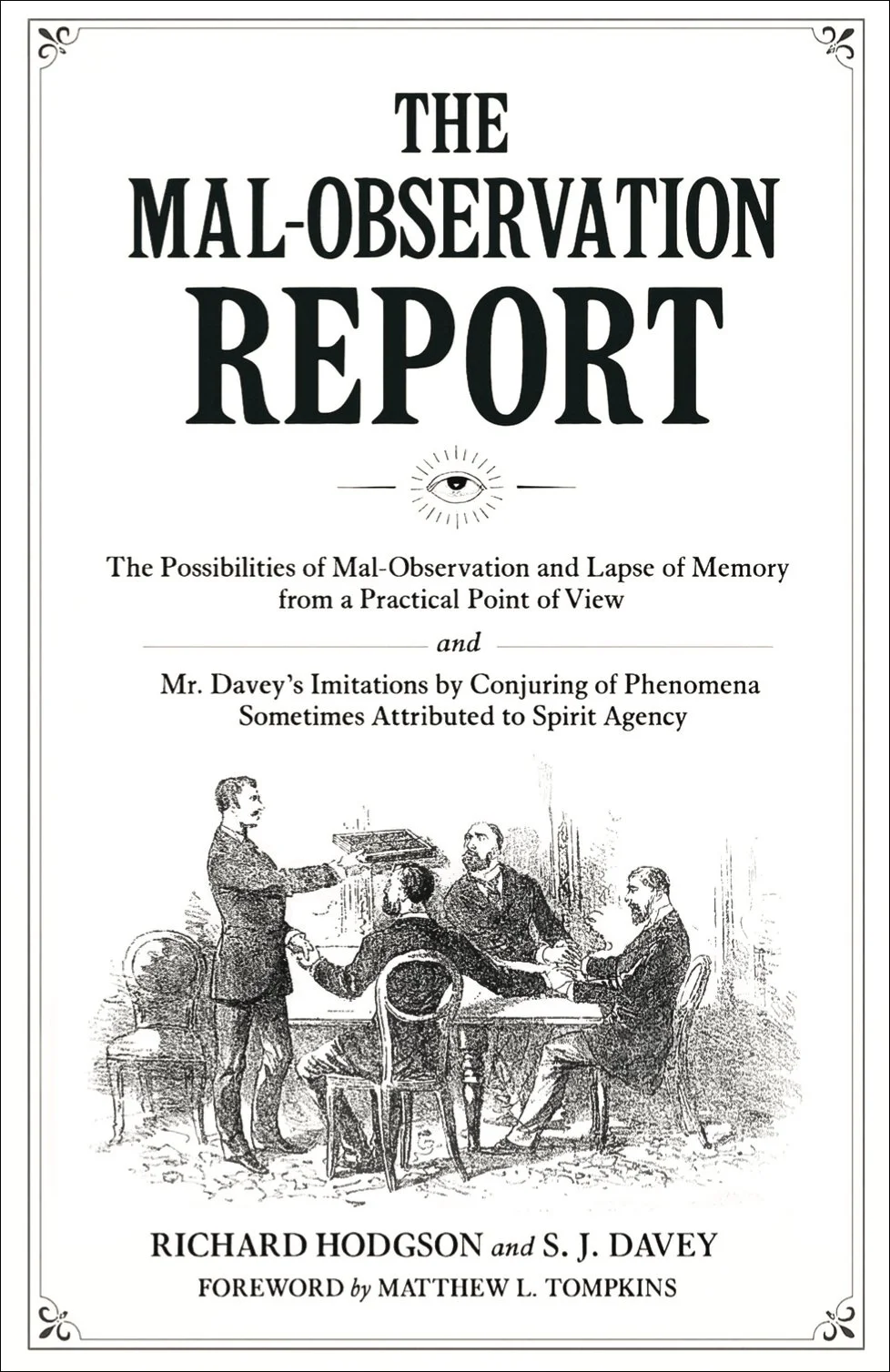The Mal-Observation Report
By Richard Hodgson and Samuel J. Davey
Foreword by Dr. Matthew L. Tompkins
January 15, 2026 (originally published in 1887 and 1892)
ISBN-13: 979-8991439589
292 pages
Originally published in 1887 by researcher Richard Hodgson and amateur magician Samuel John Davey, The Mal-Observation Report is a classic of psychical research that remains startlingly relevant to modern psychology. This 292-page volume brings together two seminal papers that revealed how performance magic methods can be used to reveal surprising limits and eccentricities of human minds.
In "The Possibilities of Mal-Observation and Lapse of Memory from a Practical Point of View" and "Mr. Davey's Imitations by Conjuring of Phenomena Sometimes Attributed to Spirit Agency," Hodgson and Davey described a series of carefully staged fake séances designed to simulate the alleged wonders of the Spiritualist movement-phenomena such as "independent slate writing." Their unsuspecting participants, asked to describe what they had witnessed, consistently misremembered, omitted, or invented details, showing how easily simple deceptions can lead people to form false beliefs about their extraordinary experiences.
Their results were so controversial that Hodgson later issued a follow-up clarification in 1892, detailing the conjuring methods used in the experiments to reassure readers that no supernatural forces had been involved. Together, these papers form a fascinating early example of an experiment on the psychology of illusion, anticipating concepts like inattentional blindness and reconstructive memory decades before modern psychology gave them names.
This new edition features several historical images and a lengthy foreword by magician and experimental psychologist Dr. Matthew L. Tompkins, who situates Hodgson and Davey's work within the growing field of cognitive science. Tompkins draws connections between their 19th-century experiments and his own psychological research using magic to explore human attention, awareness, and belief-reminding readers that the same tricks that fooled audiences in the 1880s remain just as effective today.

